 By Bob Currie, Vessel Examiner
By Bob Currie, Vessel Examiner
United States Coast Guard Auxiliary Station Galveston Flotilla.
If you haven’t been boarded by the Coast Guard, or if you don’t know someone who has been boarded, you can expect that to change. We have been tasked with doing 10 times as many boardings as we have done in the past. The purpose of this increase is to increase the awareness of and compliance with federal boating regulations, particularly the regulations dealing with required safety equipment. This column will address the most common items the Coast Guard will be examining when they board your boat.
The Station Galveston Flotilla of the US Coast Guard Auxiliary operates out of the USCG Station Galveston base on Galveston Island. They provide assistance to the Coast Guard by providing maritime observation patrols in Galveston Bay; by providing recreational boating vessel safety checks; and by working alongside Coast Guard members in maritime accident investigation, small boat training, watch standing, and property administration.
Numbers and Registration
The boat’s registration number must be permanently attached to each side of the forward half of the boat. The letters and numerals must be painted or permanently attached. They must be plain block letters and numerals at least three inches high and in a color that contrasts with the background against which they are affixed. They also must read from left to right. In Texas, the validation decal must be affixed in a line with and 3 inches towards the rear of the boat from the registration number. The letter and numeral groupings must be separated by spaces or hyphens that are equal to the width of a letter wider than “I” or the number 1. Example: TX 0123 AB. You must also carry your registration certificate aboard and present it if asked.
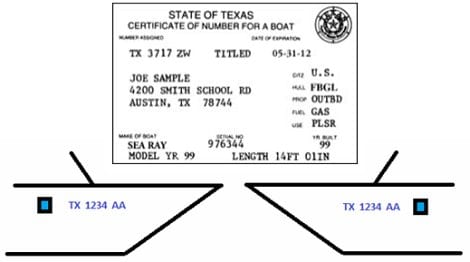
Personal Flotation Devices
There must be a Coast Guard-Approved personal flotation device (PFD) on board for every person. Children under 13 must wear their PFD when underway. The minimum requirement won’t save your life, though. PFDs only work when you are wearing them. They are almost impossible to don when you are already in the water.

Fire Extinguisher
You must have the required number of Coast Guard-Approved marine grade fire extinguishers aboard. For most recreational boats, that is usually just one. Boats over 26 feet are required to have two regular size (B-1) or one large (B-2) extinguisher.
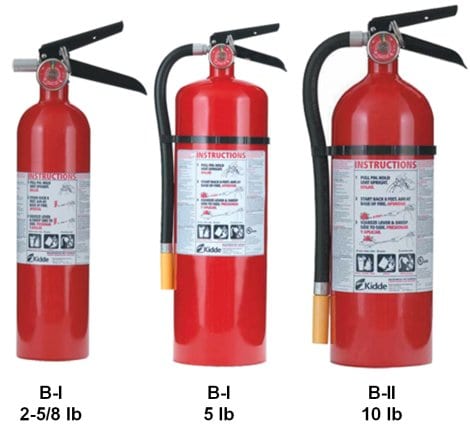
Visual Distress Signals
Recreational boats 16 feet and over are required to carry the following working and unexpired (if expiration is shown) visual distress signals:
- three day and three night pyrotechnic devices,
- one day non-pyrotechnic device (flag) and one night non-pyrotechnic device (auto SOS light), or
- a combination of 1) and 2); Example: One flag and three night pyrotechnic devices
Many of the pyrotechnic devices are certified for day AND night use. When you have three of the combination pyrotechnic devices, you have met both the day and night requirements. Flares and rockets have an expiration date 42 months from their date of manufacture. If you want a nighttime visual distress signal that doesn’t expire, you might want to look into the electronic flares. It is not true that you don’t need nighttime visual distress signals if you don’t plan to operate your boat at night. Nighttime visual distress signals are required any time there is reduced visibility, such as fog or heavy cloud cover.

Sound Producing Device
Most new boats come with a horn, and that will meet the requirement of having a sound producing device. They do fail over time, so be sure to check it before beginning each trip. Many people use an air horn, commonly called a stadium horn, as a backup. A good backup or even a main sound producing device is the Fox40 ball-less whistle. I recommend that each life preserver have one attached.
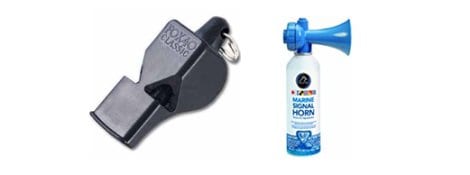
Navigation Lights
Your navigation lights must be functional. Always test your navigation lights before getting underway.
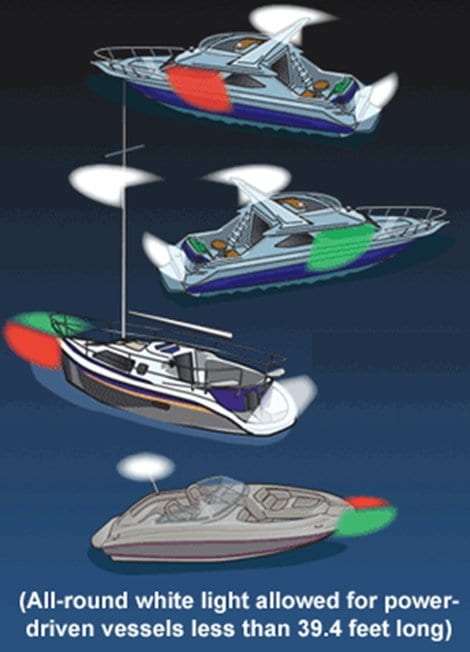
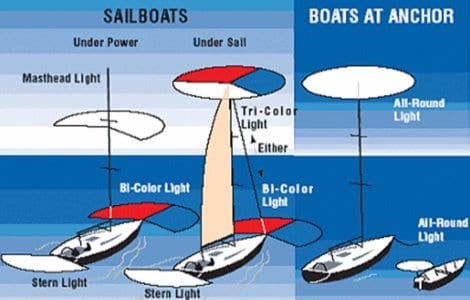
What to Expect if Boarded
The Coast Guard members who board your vessel on the open water are operating under their capacity as law enforcement officers. Their mission is one of enforcing safe boating regulations. They may or may not do a full vessel safety check, but they can, so be prepared to show each item requested when requested. A required Type IV throw cushion must be immediately accessible and not stored away in a locker. PFDs must not be stored in their original wrappers; they must be readily accessible. You may be asked to kill your engine when the patrol boat comes alongside your vessel. As the person boarding your vessel talks with you, he or she will use their training to determine if you may be operating your vessel while impaired by alcohol or drugs. If they think that you are operating while impaired, you can expect to be arrested and your vessel will be towed to port if it is determined that no one aboard can safely operate the vessel. You can expect a courteous and friendly person to board your boat. They are hoping you have all the required items. They don’t want you to fail; they want safe boaters plying their waters.
How to Prepare For Being Boarded
The easiest and most convenient way to prepare for being stopped and boarded by a Coast Guard member on a safety patrol is to undergo a free Vessel Safety Check given by a member of the Coast Guard Auxiliary or Power Boat Squadron. 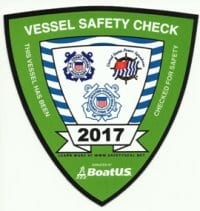 The vessel examiner will come to you and your boat to provide the inspection. If you pass the inspection, the vessel examiner will attach a Vessel Safety Check sticker to the port side of your boat, often on the wind screen up high where it can be seen. The sticker is not a pass from being boarded, but it does tell the Coast Guard that you are most likely following the boating safety regulations, and they may choose to not inspect your boat.
The vessel examiner will come to you and your boat to provide the inspection. If you pass the inspection, the vessel examiner will attach a Vessel Safety Check sticker to the port side of your boat, often on the wind screen up high where it can be seen. The sticker is not a pass from being boarded, but it does tell the Coast Guard that you are most likely following the boating safety regulations, and they may choose to not inspect your boat.
Summary
The Coast Guard is stepping up enforcement of safe boating regulations. The items listed above are the most common items the Coast Guard is checking for when they stop your boat on the open water. Knowing that enforcement is being stepped up, you can prepare for being boarded by undergoing a free Vessel Safety Check. To request a free vessel safety check, go to http://cgaux.org/vsc/.
For more information on boating safety, please visit the Official Website of the U.S. Coast Guard’s Boating Safety Division at www.uscgboating.org . Questions about the US Coast Guard Auxiliary or our free Vessel Safety Check program may be directed to me at [email protected]. I am available to perform free Vessel Safety Checks, and I will come to your location to perform them. SAFE BOATING!
[7-22-2019]

 Posted in
Posted in 























